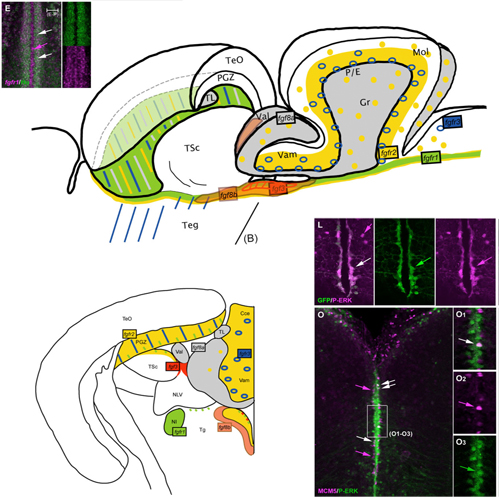Stefanie Topp, Christian Stigloher, Anna Z. Komisarczuk, Birgit Adolf, Thomas S. Becker,
Laure Bally-Cuif
JCN,
2008,
510 No.4, 422-439 published on 29.07.2008
The Journal of Comparative Neurology,
online article
The zebrafish adult brain contains numerous neural progenitors and is a good model to approach the general mechanisms of adult neural stem cell maintenance and neurogenesis. Here we use this model to test for a correlation between Fgf signaling and cell proliferation in adult progenitor zones. We report expression of Fgf signals (fgf3,4,8a,8b,17b), receptors (fgfr1-4), and targets (erm, pea3, dusp6, spry1,2,4, and P-ERK) and document that genes of the embryonic fgf8 synexpression group acquire strikingly divergent patterns in the adult brain. We further document the specific expression of fgf3, fgfr1-3, dusp6, and P-ERK in ventricular zones, which contain neural progenitors. In these locations, however, a comparison at the single-cell level of fgfr/P-ERK expression with bromo-deoxy-uridine (BrdU) incorporation and the proliferation marker MCM5 indicates that Fgf signaling is not specifically associated with proliferating progenitors. Rather, it correlates with the ventricular radial glia state, some of which only are progenitors. Together these results stress the importance of Fgf signaling in the adult brain and establish the basis to study its function in zebrafish, in particular in relation to adult neurogenesis.
